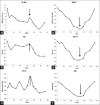Cefoperazone/sulbactam-induced hemolytic anemia
- PMID: 34528516
- PMCID: PMC9997602
- DOI: 10.4103/jpgm.JPGM_1335_20
Cefoperazone/sulbactam-induced hemolytic anemia
Abstract
Drug-induced hemolytic anemia (DIHA) is a rare complication of drug therapy and usually underdiagnosed. Cefoperazone/sulbactam is a compound prepared from the third generation of cephalosporin and β-lactamase inhibitor. There are limited data of DIHA induced from cefoperazone/sulbactam. A 93-year-old female patient, who had an operation on the biliary tract 3 months ago, was admitted to our hospital with an abdominal infection. After cefoperazone/sulbactam was given as anti-infection treatment, the patient developed hemolytic anemia on the third day. Cefoperazone/sulbactam was discontinued and replaced with meropenem. Subsequently the level of red blood cells, hemoglobin, and hematocrit returned to normal. Clinicians should pay attention to monitoring the possible adverse reactions during the use of cefoperazone/sulbactam and should be aware of the occurrence of DIHA, so as to give timely treatment.
Keywords: Adverse reactions; cefoperazone; drug-related side effects; hemolytic anemia; sulbactam.
Conflict of interest statement
None
Figures


Comment in
-
Drug-induced hemolytic anemia due to cefoperazone-sulbactum: Challenges in reaching diagnosis.J Postgrad Med. 2023 Jan-Mar;69(1):9-10. doi: 10.4103/jpgm.jpgm_248_22. J Postgrad Med. 2023. PMID: 36571331 Free PMC article. No abstract available.
-
The McNamara fallacy in medical education: Spot it, stop it.J Postgrad Med. 2023 Jan-Mar;69(1):7-8. doi: 10.4103/jpgm.jpgm_765_22. J Postgrad Med. 2023. PMID: 36629225 Free PMC article. No abstract available.
Similar articles
-
A case of immune hemolytic anemia induced by ceftizoxime and cefobactam (sulbactam/cefoperazone).Korean J Lab Med. 2009 Dec;29(6):578-84. doi: 10.3343/kjlm.2009.29.6.578. Korean J Lab Med. 2009. PMID: 20046091
-
Hemolytic Anemia and Reactive Thrombocytosis Associated With Cefoperazone/Sulbactam.Front Pharmacol. 2019 Nov 8;10:1342. doi: 10.3389/fphar.2019.01342. eCollection 2019. Front Pharmacol. 2019. PMID: 31798450 Free PMC article.
-
Cefoperazone-sulbactam for treatment of intra-abdominal infections: results from a randomized, parallel group study in India.Surg Infect (Larchmt). 2008 Jun;9(3):367-76. doi: 10.1089/sur.2007.013. Surg Infect (Larchmt). 2008. PMID: 18570578 Clinical Trial.
-
Efficacy and safety of generic cefoperazone/sulbactam versus branded cefoperazone/sulbactam in the treatment of bacterial infections: a systematic review and meta-analysis.J Chemother. 2024 Dec;36(8):698-708. doi: 10.1080/1120009X.2024.2343961. Epub 2024 Apr 21. J Chemother. 2024. PMID: 38644652
-
Cefoperazone and sulbactam-related eosinophilic peritonitis: a case report and literature review.J Int Med Res. 2021 Jun;49(6):3000605211025367. doi: 10.1177/03000605211025367. J Int Med Res. 2021. PMID: 34162261 Free PMC article. Review.
Cited by
-
Autoimmune Hemolytic Anemias: Classifications, Pathophysiology, Diagnoses and Management.Int J Mol Sci. 2024 Apr 12;25(8):4296. doi: 10.3390/ijms25084296. Int J Mol Sci. 2024. PMID: 38673882 Free PMC article. Review.
-
Drug-induced hemolytic anemia due to cefoperazone-sulbactum: Challenges in reaching diagnosis.J Postgrad Med. 2023 Jan-Mar;69(1):9-10. doi: 10.4103/jpgm.jpgm_248_22. J Postgrad Med. 2023. PMID: 36571331 Free PMC article. No abstract available.
References
-
- Iakovlev VP. [Sulperazone--a combined form of cefoperazone with sulbactam] Antibiot Khimioter. 1995;40:55–70. - PubMed
-
- Naranjo CA, Busto U, Sellers EM, Sandor P, Ruiz I, Roberts EA, et al. A method for estimating the probability of adverse drug reactions. Clin Pharmacol Ther. 1981;30:239–45. - PubMed
-
- Harcke SJ, Rizzolo D, Harcke HT. G6PD deficiency: An update. JAAPA. 2019;32:21–6. - PubMed
-
- Garratty G. Immune hemolytic anemia associated with drug therapy. Blood Rev. 2010;24:143–50. - PubMed
-
- Arndt PA, Leger RM, Garratty G. Positive direct antiglobulin tests and haemolytic anaemia following therapy with the beta-lactamase inhibitor, tazobactam, may also be associated with non-immunologic adsorption of protein onto red blood cells. Vox Sang. 2003;85:53. - PubMed
Publication types
MeSH terms
Substances
LinkOut - more resources
Full Text Sources

